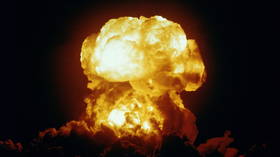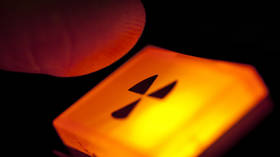Risk of nuclear arms use highest in decades – watchdog

The risk of nuclear weapons being used is higher “than at any time since the height of the Cold War,” the Stockholm International Peace Research Institute (SIPRI), a leading weapons watchdog, has warned. The shrinking global stockpile of nuclear weapons is now expected to begin growing once again, according to SIPRI Yearbook 2022.
While greatly reducing their stockpiles after the end of the Cold War, the US and Russia combined still possess over 90% of the world’s nuclear warheads, according to the report. According to SIPRI’s estimates, Russia has around 5,977 warheads, and the US has around 5,428.
“Overall, the number of nuclear warheads in the world continues to decline, but this is primarily due to Russia and the USA dismantling retired warheads,” the yearbook reads. “Global reductions of operational warheads appear to have stalled, and their numbers may be rising again. At the same time, both Russia and the USA have extensive and expensive programmes under way to replace and modernize their nuclear warheads, missile and aircraft delivery systems, and nuclear weapon production facilities.”
The nuclear disarmament process appears to have stalled lately and the stockpiles of the major powers, as well as other nuclear-armed nations, are expected to start growing, the watchdog warned. “If the nuclear-armed states take no immediate and concrete action on disarmament, then the global inventory of nuclear warheads could soon begin to increase for the first time since the Cold war,” Matt Korda, associate researcher with SIPRI’s Weapons of Mass Destruction Programme, said.
The risk of actual use of nuclear weapons is growing as well, and appears to be higher than ever since the end of the Cold War, SIPRI researchers believe. While the nuclear-armed permanent members (P5) of the UN Security Council – China, France, Russia, the UK, and US – managed to adopt a joint statement early this year affirming that a “nuclear war cannot be won and must never be fought,” all of these countries “continue to expand or modernize their nuclear arsenals” as well as “appear to be increasing the salience of nuclear weapons in their military strategies,” SIPRI warned.
The ongoing conflict between Russia and Ukraine has put a further dent in the global security situation, according to the watchdog. The “strategic stability talks” between Moscow and Washington “have stalled because of the war, and none of the other nuclear-armed states are pursuing arms control negotiations.”
“Although there were some significant gains in both nuclear arms control and nuclear disarmament in the past year, the risk of nuclear weapons being used seems higher now than at any time since the height of the Cold war,” SIPRI Director Dan Smith believes.













